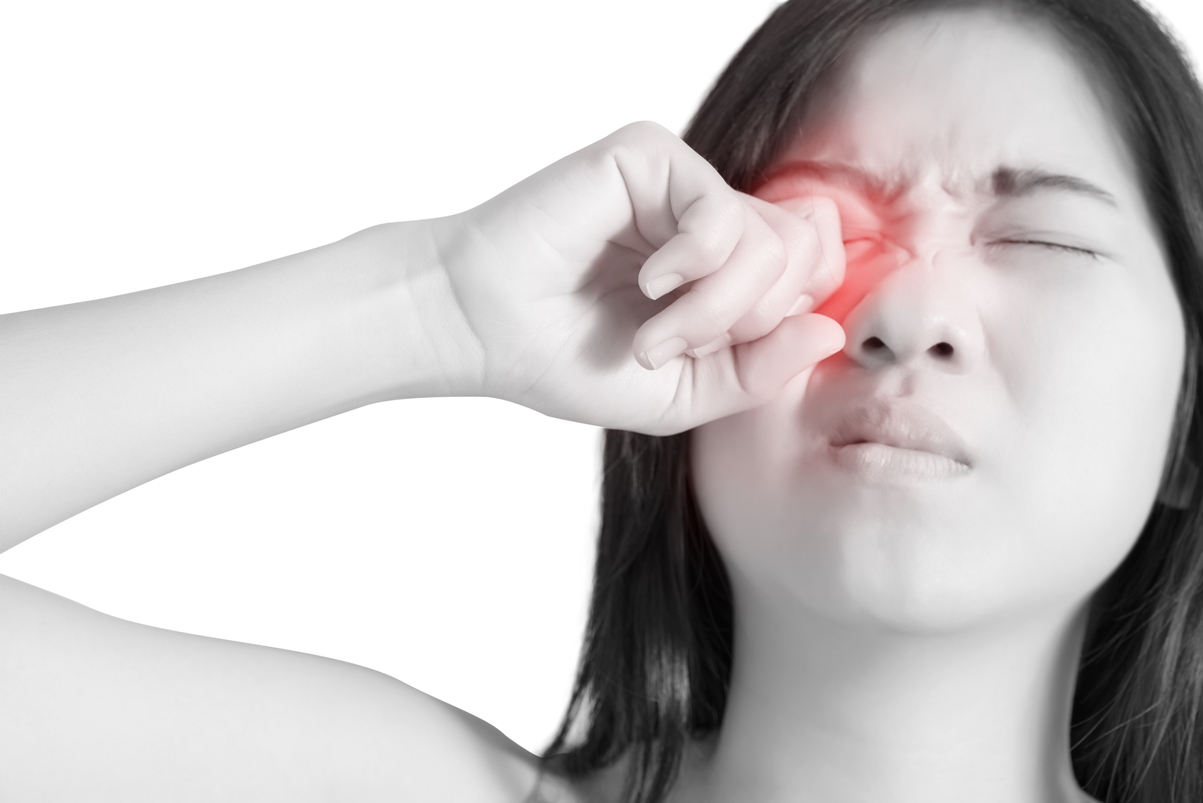
The eyes are said to be windows to the soul, and they are, certainly, for many rheumatic conditions. As we examine the many eye issues that can possibly be related to systemic problems, this article will be describing some of the parts of the eye from the outside going in, along with terminologies used when these are diseased, and the rheumatic conditions they can be associated with.
Outside in
The eyeball has a sclera, a strong coat of tissue that covers almost all surfaces of the eyeball. Inflammation of the sclera can lead to either episcleritis, which is superficial and causes more discomfort than pain, or scleritis, which is more deep-seated, red, swollen, and painful. Forty percent of people with scleritis will have a rheumatic disease—most commonly rheumatoid arthritis, an autoimmune condition which may lead to joint deformities and can also affect the lungs and other organs of the body if it remains uncontrolled. The second most common rheumatic condition associated with scleritis is systemic vasculitis, where there is inflammation of the small blood vessels. Other conditions where this may be seen include relapsing polychondritis, which usually affects the cartilages of the ear and nose and leads to “cauliflower ears,” and spondyloarthritis, an autoinflammatory group of conditions that will be explained further below. Scleritis is serious and typically needs systemic remedy with antiinflammatory medicines, such as steroidal and non-steroidal drugs.
The conjunctiva is found next, surrounding the eye and the inner surface of the eyelids. Conjunctivitis—also known as pinkeye—is the result of infection, allergy, or other conditions which inflame the small blood vessels, giving the eye a reddish or pink hue. There could be tearing up, as well as itchiness. While conjunctivitis is usually due to non-rheumatic causes, a certain condition called keratoconjunctivitis sicca, or dry eye syndrome, leads to eye irritation and causes a foreign body sensation, being sensitive to light, i.e., easily feels blinded by a light source, and rarely pain. Sicca is commonly seen in Sjogren syndrome, another autoimmune condition which mainly affects the glands of the body, producing dryness of the mucous membranes—such as the eyes and mouth. Sjogren syndrome may also manifest with joint pain, fatigue, and other organ abnormalities, much like the other systemic autoimmune rheumatic diseases. It can be primary or secondary to rheumatoid arthritis as well. Sicca can be managed by lubricants, topical ointments and even systemic treatment when necessary.
The cornea, the clear dome on the surface of the eye where you would place a contact lens on, is where light focuses through to get into the anterior chamber. Corneal inflammation, i.e., keratitis, may cause pain, sensitivity to light, impaired eyesight, and a gritty sensation, like there are scratches in the eye. While it isn’t as commonly seen in rheumatic diseases, it may still be associated with rheumatoid arthritis and other causes of scleritis mentioned above.
Light then goes through the iris, the colored part of the eye. The iris is part of the uvea, which when diseased is called uveitis that causes eye redness, pain, and blurred vision. Uveitis involves a group of about 30 diseases that can have varied causes, including infections, systemic diseases, or immune disease limited to the eye. It can involve any or all of the three—front, middle, or back part of the uvea; can be sudden or slowly-occurring; can be in just one eye or affect both eyes; and can be recurrent and chronic.
One condition, acute anterior uveitis, where the eye is typically painful, red, and sensitive to light, is most commonly seen in spondyloarthritis, an auto-inflammatory group of arthritis that have different types:
- Psoriatic arthritis which occurs in 30% of people with psoriasis,
- Ankylosing spondylitis which can lead to a fused “bamboo spine” if untreated, and
- Inflammatory bowel disease-related arthritis
Chronic uveitis, on the other hand, is usually more slowly-occurring and the eye is less symptomatic. It’s associated with juvenile idiopathic arthritis, a form of autoimmune arthritis seen in children. Yes, arthritis can also occur in the young. Uveitis can also be seen in Behcet’s disease, which is a type of vasculitis or blood vessel inflammation and other vasculitis syndromes. Uveitis can be managed through topical, oral, or injectable, anti-inflammatory or even immunosuppressive medicines.

Tears, light-sensitivity
Light then travels through the lens, which may have hastened cataract formation especially in people who have to take steroids for their rheumatic conditions. The lens functions to focus light onto the retina, the light-sensitive tissue lining the back of the eye. The latter then sends signals through the optic nerve to the part of the brain responsible for our sight. Diseases of the retina involve inflammation, such as in vasculitis; or microvascular disease such as lupus; or occlusion of its blood vessels, such as in antiphospholipid antibody syndrome (APAS). Uncontrolled disease may cause blindness. Optic nerve diseases also involve either inflammation or occlusion, and may also lead to reduced color vision, as well as transient or permanent loss of vision.
The lacrimal gland is located outside the eyeball and produces the watery part of tears (there’s an oil part made by another gland), and is located on the outside edge of the eyebrow towards the side of the temple. Diseases of this gland, such as in the previously-mentioned Sjogren Syndrome, may cause eye dryness and irritation. The orbit houses the eyeball and its surrounding muscles, and inflammation of the orbital tissue may cause the eye to “pop out.” This may be associated with rheumatism, such as in idiopathic myositis wherein the eye muscles become inflamed, or in orbital pseudo-tumors. Symptoms not only include bulging eyeballs, but also possible doubling and blurred vision, difficulty moving the eye, as well as pain.
Communication with your doctor regarding treatment and medication is important to discuss benefits over risks, and obtain the best results with minimal risk. As mentioned above, some medicines used in managing rheumatic conditions may cause eye problems. Steroids may increase the risk of glaucoma from increased pressure in the eyeball, apart from cataracts. In people with systemic lupus erythematosus (SLE) who are prescribed hydroxychloroquine, an anti-malarial that’s also an immunomodulatory medicine, a yearly trip to the eye doctor is advised to help detect possible side effects like corneal deposits, lens opacity, and retinopathy, which may cause visual problems. With hydroxychloroquine, it has been found that so long as the received dose is less than 5 mg per kg of body weight for less than 10 years, the occurrence of retinal toxicity is still relatively low at 2%.
The eye may be small, but it can be affected in so many ways and by a variety of conditions! Therefore, symptoms shouldn’t always just be easily dismissed to avoid and help prevent permanent complications. Please always seek the advice of your family physician.
Originally published in HealthToday Issue 1 2021
References:1. Boyd K, Turbert D. Parts of the eye. American Academy of Ophthalmology resource page. Available at: https://www.aao.org/eye-health/anatomy/parts-of-eye. Accessed 18 November 2020. 2. Khan IR, Thorne JE, Jabs DA. The eyes in rheumatic disease. In: Hochberg MC, et al, eds. Rheumatology. 7th edition. Philadelphia, PA: Elsevier; 2019; 260–270. 3. Stokkermans TJ, et al. Chloroquine and hydroxycloroquine toxicity. National Center for Biotechnology Information resource page. Available at: https://ww




